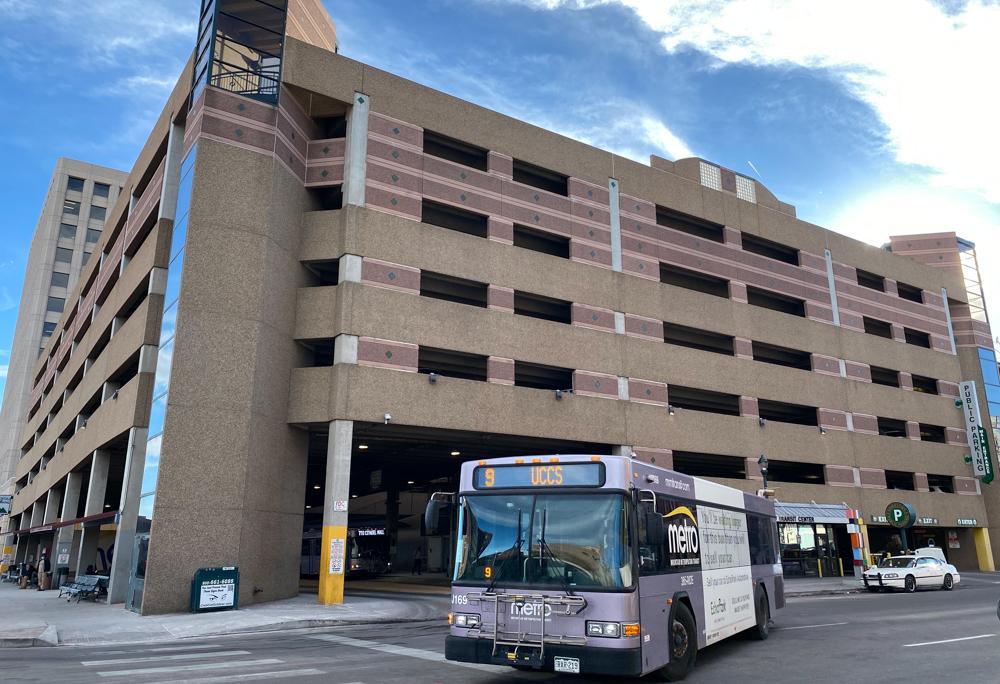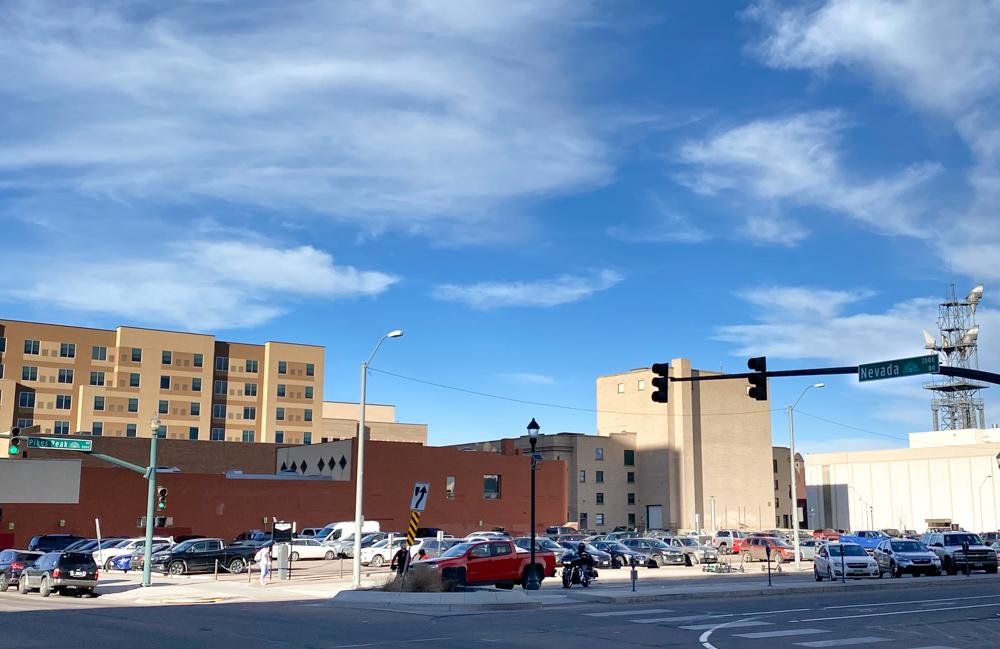
Colorado Springs is looking at building a new downtown transit center. It would become a hub connecting different modes of transportation, ranging from buses to electric scooters.
The goal is to replace the current 1970s facility and improve operations, safety and the passenger experience. During a recent city council worksession, city staff and Norwood Development Group presented a concept that includes commercial and residential uses, along with parking and a local and intercity bus station.
A feasibility study included an informal design, with the transit center on the ground level where passengers could catch Mountain Metro Transit, Greyhound and Bustang buses, downtown shuttles, taxis, ride-hailing services and bike shares. Also, there would be a way to connect to a potential Amtrak and Front Range Rail train station. City staff said the aim is to provide ways for people to easily get into the city and to their final destination and then return home again.
Upper floors would be for parking and a wide range of other uses such as restaurants, retail, office and residential units. According to city staff, the building would be more visually appealing than traditional parking structures and be designed for a more user-friendly experience. For example, an app might provide information on where empty parking spots are and those would be marked with lights for easier access.

After considering dozens of potential locations, the city has selected a site on East Pikes Peak Avenue between Weber Street and Nevada Avenue. The site is currently a parking lot a block away from the existing bus terminal and across the street from the downtown post office.
Next they’ll develop an agreement between public and private participants. Design work is expected to start next year, construction a year later with completion in 2027.









